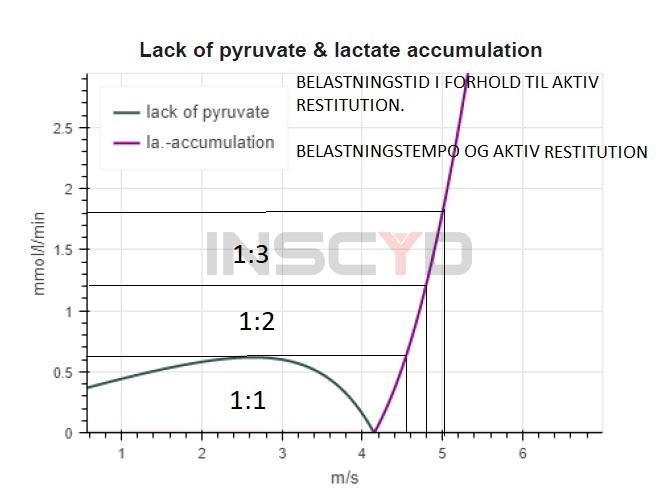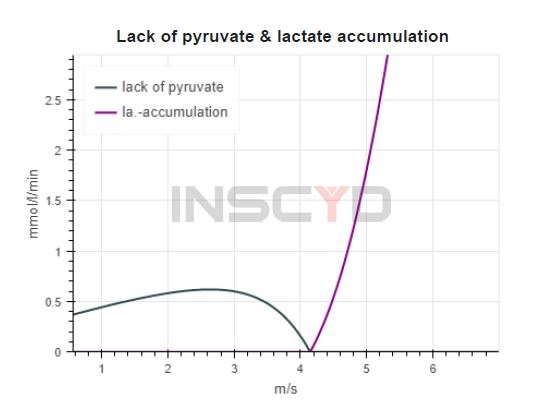Intervaltræning.
Design af specifikke træningsprogrammer baseret på LOP og laktatakkumulering har vist sig at være et meget succesfuldt koncept for intervaltræning. Sådanne træningstilgange kan øge bufferkapacitet, laktatudveksling og laktatnedbrydningen.
Hvis du sigter mod en specifik intensitet, baseret på et bestemt løb eller konkurrencemål, du prøver at opnå, skal du vælge denne intensitet fra LOP og laktatakkumuleringsgrafen. Beslut derefter, hvor lang tid intervallet skal vare. Ved simpelthen at multiplicere denne tid med den faktiske laktatakkumuleringsværdi, vil du få en idé om, hvor meget laktat der vil akkumulere under indsatsen. Ved derefter at vælge intervallets restitutionsintensitet, kan du se, hvor hurtigt atleten kan forbrænde det akkumulerede laktat.
Med disse oplysninger kan du derefter skabe individuelle intervalprogrammer baseret på atleten's nuværende fysiske status og de mål, du ønsker at opnå i fremtiden.
I grafen til højre viser vi 3 eksempler:


